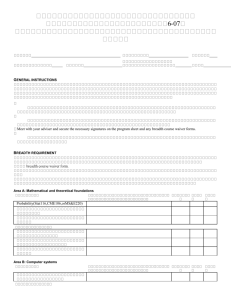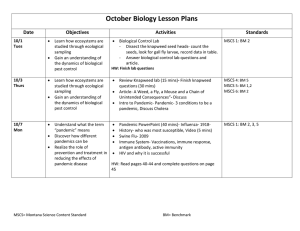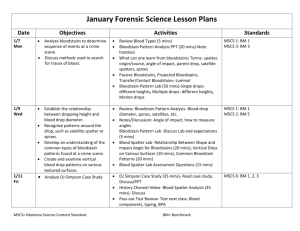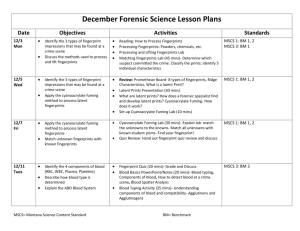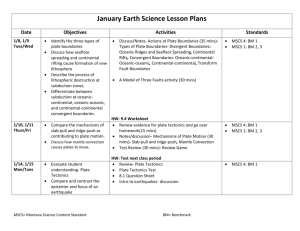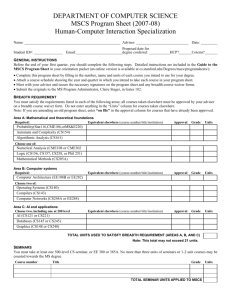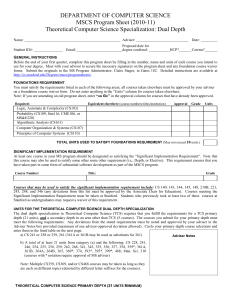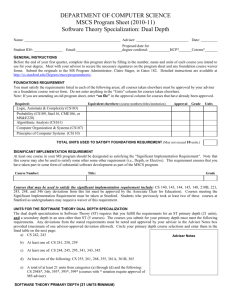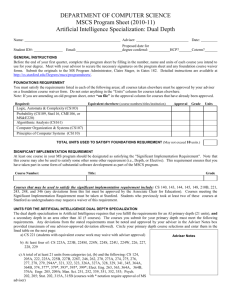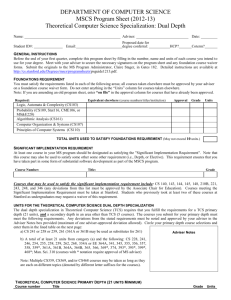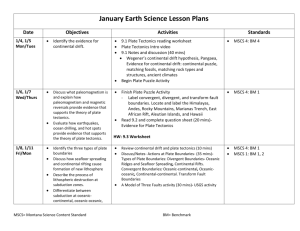November Biology Lesson Plans Date Objectives Activities Standards
advertisement
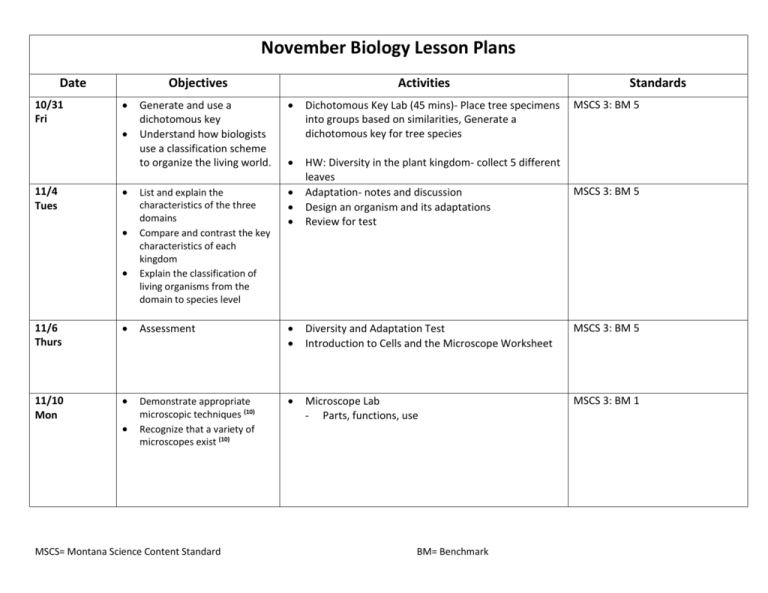
November Biology Lesson Plans Date 10/31 Fri Objectives 11/4 Tues Activities Generate and use a dichotomous key Understand how biologists use a classification scheme to organize the living world. Dichotomous Key Lab (45 mins)- Place tree specimens into groups based on similarities, Generate a dichotomous key for tree species List and explain the characteristics of the three domains Compare and contrast the key characteristics of each kingdom Explain the classification of living organisms from the domain to species level HW: Diversity in the plant kingdom- collect 5 different leaves Adaptation- notes and discussion Design an organism and its adaptations Review for test Standards MSCS 3: BM 5 MSCS 3: BM 5 11/6 Thurs Assessment Diversity and Adaptation Test Introduction to Cells and the Microscope Worksheet MSCS 3: BM 5 11/10 Mon Demonstrate appropriate microscopic techniques (10) Recognize that a variety of microscopes exist (10) Microscope Lab - Parts, functions, use MSCS 3: BM 1 MSCS= Montana Science Content Standard BM= Benchmark 11/12 Wed Identify common features among all cells(10) Compare and contrast prokaryotes and eukaryotes (10) Compare and contrast the structure, function and relationship of key cellular components (10) Identify key differences between plant and animal cells Review microscope parts 7.2- Cell Structure- parts of the cell, types of cells Cell size Prokaryote vs. eukaryote Workbook Activity: General Characteristics MSCS 3: BM 1 (10) 11/14 Fri Identify common features among all cells(10) Compare and contrast prokaryotes and eukaryotes (10) Compare and contrast the structure, function and relationship of key cellular components (10) Identify key differences between plant and animal cells (10) 11/18 Tue Identify common features among all cells(10) Compare and contrast prokaryotes and eukaryotes (10) Compare and contrast the structure, function and relationship of key cellular components (10) Identify key differences between plant and animal cells Cell Organelles Prokaryotes- Discussion (10 mins)- Cellular components and structure Eukaryotes- (30 mins)- Cellular Components and Function- Difference between plant and animal cells Organelles and their function Cellular membrane, cell wall, nucleus, mitochondria, chloroplasts, ribosomes, cytoplasm, vacuoles, ER, golgi bodies Cell Analogy Activity MSCS 3: BM 1 Diversity in Cell Structure Lab Activity Staining cells Plant vs. Animal Cell Lab (60 mins) Cheek Cell Lab- Collect cheek cells, stain, and examine under microscope, Shape, size, organelles Plant Cell Lab- Onion cells and elodea cells, Shape, size, organelles Post-lab Questions MSCS 3: BM 1 HW: Finish Post-lab questions (10) MSCS= Montana Science Content Standard BM= Benchmark 11/21 Th Compare and contrast the structure, function, and relationship of key cellular components. Explain how concentration of substances affects diffusion and osmosis. Cell Review (10 mins) Osmosis and Turgor Pressure Lab (40 mins) Potato and cucumber slices, salt water and distilled water How does mass change over time? What do you think happened to the cells in the potato and cucumber? Cell Membrane PowerPoint (25 mins)- Components of cell membrane, Diffusion through cell boundaries, Osmosis , Osmotic Pressure and plasmolysis MSCS 3: BM 1 HW: Read 7-3 and Complete Question Sheet (5 mins) 11/25 Mon Compare and contrast the structure, function, and relationship of key cellular components. Explain how concentration of substances affects diffusion and osmosis. MSCS= Montana Science Content Standard Turn in 7.3 Worksheet and Discuss Explain WebQuest (10 mins) Cells Alive WebQuest (65 mins) Cell Size Plants vs. animals Organelles BM= Benchmark MSCS 3: BM 1
